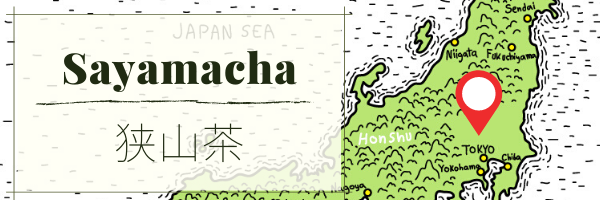Sayamacha (Sayama-Cha)
Introduction
Along with the Ujicha and Shizuokacha, the Sayamacha, known for its exceptional taste, is regarded as one of the “Three Great Teas of Japan”.
Manufactured mainly in the western areas of Saitama prefecture and Nishi-Tama areas of Tokyo, the Sayamacha is characterized by its thick leaves and strong aroma. This aroma is called the “Hiire-ka”, as it is a scent created during the “Hiire” phase of the manufacturing process of the tea.
The tea made in this area is predominantly Sencha and Fukamushi-Sencha. You can find types of Bancha as well.
You won’t come across Sayamacha too often, as the production of Sayamacha is quite low and is relatively rare. Perhaps this is one of the reasons why it is not as well known as the Ujicha or Shizuokacha.
Thick leaves and Strong Aroma
The tea farms of Sayamacha is one of the northern-most tea farms in Japan. The relatively cold climate allows for the tea leaves to accumulate more nutrients during winter, making the tea leaves thicken. This thickness of the leaf is one of the distinct characteristics of Sayamacha.
Because of this, the tea must go through a unique heating process during the “Hiire” phase of the manufacturing process of the tea. This “Hiire” phase is a common step in most Japanese green tea, to conduct the final drying of the tea leaves while enhancing the aroma. For Sayamacha, it requires an especially strong fire, and this is called the “Sayama-Hiire”. This process adds a unique aroma, called the “Hiire-ka”, to the tea.
The History
It is said that the history of Sayamacha is old, and dates to the Kamakura Era (1185 – 1333). During the Edo Period (1603 – 1868), this was one of the early adopters of Sencha. Sayamacha was established as a brand and grew to become very popular in Edo.

